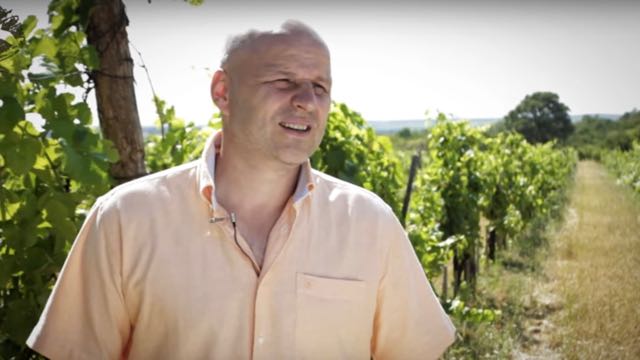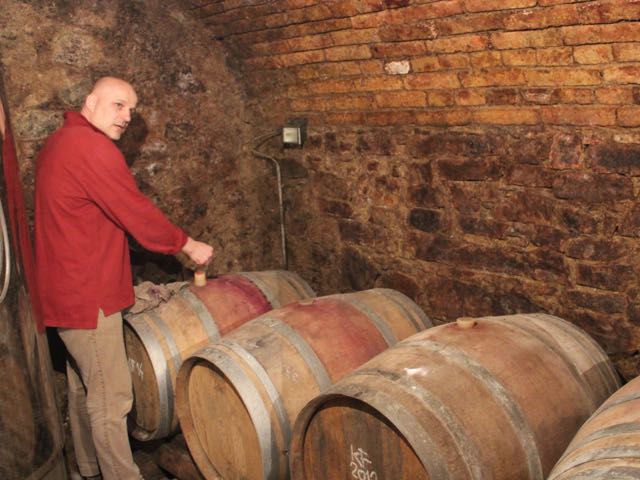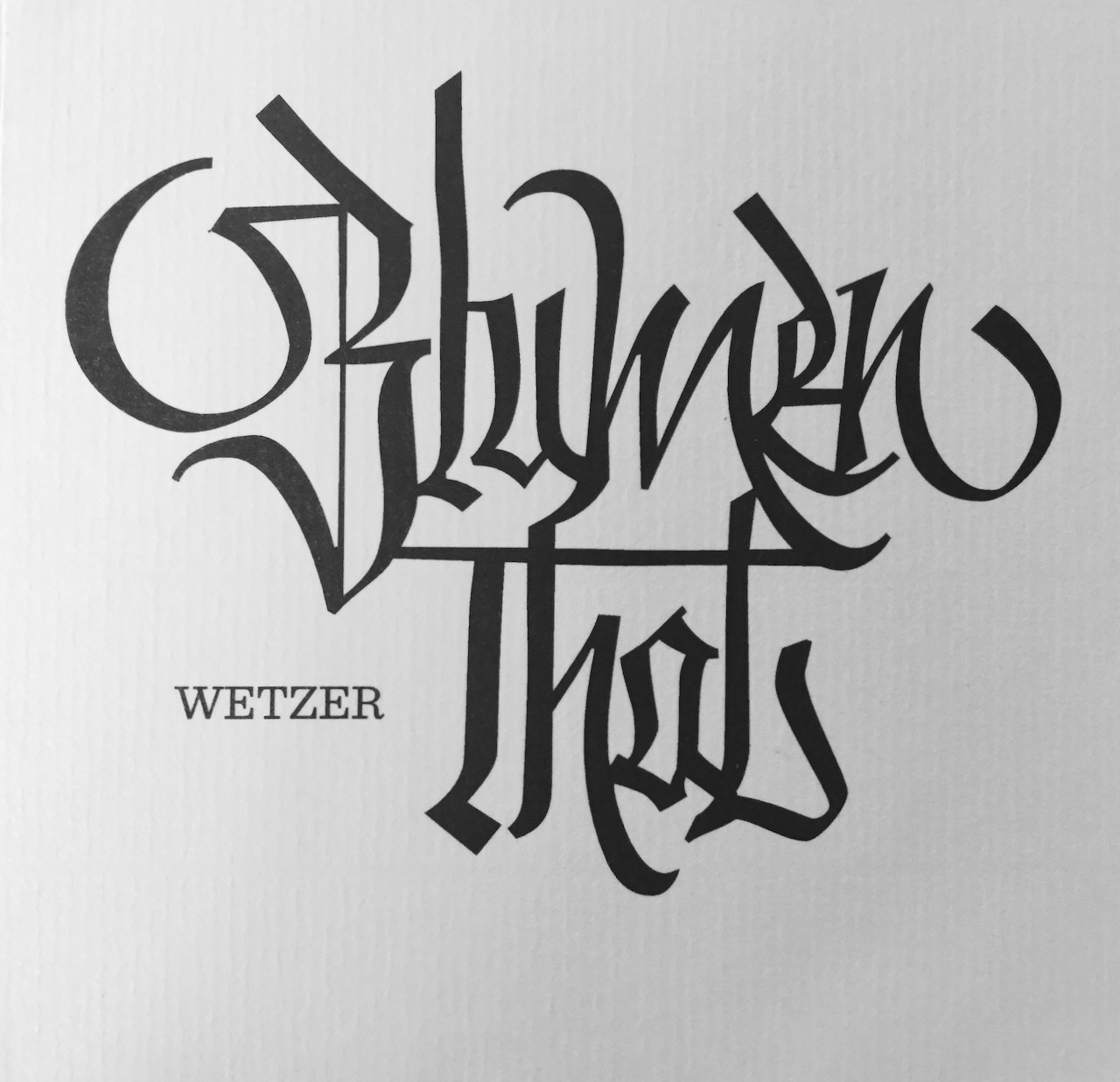

Wetzer, Sopron, Hungary
“I want to make special wines that have personality and identity, delicate wines with character influenced by their origin and heritage, made with traditional grape varieties which translate the sense of place.” — Peter Wetzer

At a Glance
http://wetzer-bor.com/
Sopron
Sub-Alpine
Clay, red gravel, limestone, and loess
250m
Near the Austrian border, on the foothills of the Alps
Kékfrankos, Furmint
2.5 hectares
Organic
Natural
Sopron
Sub-Alpine
Clay, red gravel, limestone, and loess
250m
Near the Austrian border, on the foothills of the Alps
Kékfrankos, Furmint
2.5 hectares
Organic
Natural

Peter Wetzer
The Appellation
Sopron was once the capital of Burgenland, itself a part of Hungary until 1921. Nowadays the border is incredibly permeable and many Hungarians commute to Austria for work and in turn Austrians come for cheap dental care. Similar to other Hungarian wine regions, Szekszárd most notably, Swabian settlers also had a great influence in Sopron. These early settlers were known as “Poncichter” (Bohnenzüchter in German) because they planted beans as cover crops using the grape canopy to shade them. Since beans weren’t taxed, this enabled them to feed themselves while waiting for finished wine.

The dominating geographical influence of the region is Lake Fertő (aka Neusiedlersee) which provides protection from extreme weather while also encouraging botrytis in select exposures. Sopron produces a wonderful combination of red and dessert wines. In fact, prior to Phylloxera, the region was predominately white wine (Furmint mostly) which is also slowly coming back to life. Speaking of coming back to life, Peter Wetzer openly acknowledges that people in Sopron were originally working the vineyards like they do in Burgundy. Small plots over generations and generations. People used to know how to react to vintages, how best to farm each special place, when to pick and so on. According to Peter, ”That has been lost here and now we need to get it back.” “I’m trying to continue the past.”

The dominating geographical influence of the region is Lake Fertő (aka Neusiedlersee) which provides protection from extreme weather while also encouraging botrytis in select exposures. Sopron produces a wonderful combination of red and dessert wines. In fact, prior to Phylloxera, the region was predominately white wine (Furmint mostly) which is also slowly coming back to life. Speaking of coming back to life, Peter Wetzer openly acknowledges that people in Sopron were originally working the vineyards like they do in Burgundy. Small plots over generations and generations. People used to know how to react to vintages, how best to farm each special place, when to pick and so on. According to Peter, ”That has been lost here and now we need to get it back.” “I’m trying to continue the past.”

The People
Peter is the 5th generation living in his house with a 120+ year old attached cellar. He came up in the wine industry working in both Eisenstadt and Vienna and has been a ceaseless student of the world of wine inside and outside of Sopron. His biggest lesson learned are wines of industry versus wines of nature. Fortunately he’s chosen the latter. His wines are both raw and elegant.

The vineyards, credit Terra Hungarica
Vineyards
Peter purchased 2.5 hectares spread over 5 different terroirs in 2007. It was a long hunt for healthy soils that hadn’t been party to the industrial farming that was commonplace during Communism. He found sites that were alive with flora and fauna, healthy cover crops and with exposures that only require 1-2 sparys of Sulfur per growing season. Everthing is done by hand with zero tilling and trimming. All sites are picked and fermented separately. His Kékfrankos comes from the Kohlenberg and Harmler vineyards. The soil is a mixture of clay, red gravel, limestone, and loess. Vine age ranged from 25-60 years old.

Winemaking
In concert with Peter’s work in the vineyards, little to no intervention is the dogma without being dogmatic overall. The 120+ year old cellar is ripe with plenty of microbiological flora and the grapes arrive with extremely healthy yeast populations. All wines are therefore fermented with native yeasts with no other additives. Fermentations take place in open topped containers before being barreled down into used Hungarian oak barrels. The Kékfrankos spent 18 months on the lees without bâtonnage. The 2013 was neither fined nor filtered and bottled by gravity. Total SO2 around 21 mg/l.

Red Wine , Organic
Kékfrankos;
13.5%
Kékfrankos;
13.5%
Peter’s Kékfrankos ripens late and is often picked in late October and into November. Part of this is the way he farms and other is finding the cooler locations. The fruit is destemmed, open vat fermented, and then gets about 3 weeks maceration before being barreled down to used Hungarian Oak. It’s then bottled unfined and unfiltered. Despite the late pick, acidity is by no means compromised and the wine is impossibly bright even when carrying a few grams of residual sugar and just over 13% alcohol.

Red Wine , Organic
Kékfrankos;
13.5%
0.02 g/l
5.2 g/l
Kékfrankos;
13.5%
0.02 g/l
5.2 g/l
Peter’s Kékfrankos ripens late and is often picked in late October and into November. Part of this is the way he farms and other is finding the cooler locations. The fruit is destemmed, open vat fermented, and then gets about 3 weeks maceration before being barreled down to used Hungarian Oak. It’s then bottled unfined and unfiltered. Despite the late pick, acidity is by no means compromised and the wine is impossibly bright even when carrying a few grams of residual sugar and just over 13% alcohol.

Red Wine , Organic
Kékfrankos;
13%
1.6 g/l
6.4 g/l
Kékfrankos;
13%
1.6 g/l
6.4 g/l
Blumenthal is a 60+ year-old single vineyard that yields much smaller berries and is planted in deep gravel and silt soils. Much like the estate Kékfrankos, harvest is much later than the acidity would indicate – often finishing picking in late October. The ratio of more skins to juice and a longer growth season gives more tannins than of his other reds. The 2019 was open vat fermented with around 20% whole cluster and 3 weeks total maceration before being barreled down to neutral Hungarian oak for 12 months. Bottled unfined and unfiltered
with a small addition of SO2, this one needs some air and loves as much bottle age as it can get.

Red Wine , Organic
Kékfrankos;
13%
Kékfrankos;
13%
Blumenthal is a 60+ year-old single vineyard that yields much smaller berries and is planted in deep gravel and silt soils. Much like the estate Kékfrankos, harvest is much later than the acidity would indicate – often finishing picking in late October. The ratio of more skins to juice and a longer growth season gives more tannins than of his other reds. The wine was open vat fermented with around 20% whole cluster and 3 weeks total maceration before being barreled down to neutral Hungarian oak for 12 months. Bottled unfined and unfiltered
with a small addition of SO2, this one needs some air and loves as much bottle age as it can get.

Red Wine , Organic
Kékfrankos;
13.9%
5.2 g/l
6.2 g/l
Kékfrankos;
13.9%
5.2 g/l
6.2 g/l
This is the first time we are able to bring in this 60+ year-old single vineyard. This is an extreme place to grow because it’s both eastern facing (towards the lake and reed zone) and devoid of most nutrients. Chock full of schist, quartz and gneiss, Peter considers this a Grand Cru because the extremes balance one another out. This is much cooler, has the longest growing season (often picked weeks
later than anything else), and it needs it. The fruit here is ripe due to high soil heat retention, acidity is miraculously high, and the 3 weeks of maceration includes a small percentage of stems to add some
needed aromatics and bitterness. This is crunchy and concentrated Kékfrankos. Fermented and aged in Hungarian 500L, it’s bottled unfined, unfiltered and with a modicum of sulfur.

Red Wine , Organic
Kékfrankos;
12.9%
3.7 g/l
6.4 g/l
Kékfrankos;
12.9%
3.7 g/l
6.4 g/l
Spern Steiner is a 60+ year-old vineyard that is an extreme place to grow because it’s both eastern facing (towards the lake and reed zone) and devoid of most nutrients. Chock full of schist, quartz and gneiss, Peter considers this a Grand Cru because the extremes balance one another out. This is much cooler, has the longest growing season (often picked weeks
later than anything else), and it needs it. The fruit here is ripe due to high soil heat retention, acidity is miraculously high, and the 3 weeks of maceration includes a small percentage of stems to add some needed aromatics and bitterness. This is crunchy and concentrated Kékfrankos. Fermented and aged in Hungarian 500L, it’s bottled unfined, unfiltered and with a modicum of sulfur.

White Wine , Organic
Grüner Veltliner;
13.9%
Grüner Veltliner;
13.9%
This wine is something that Péter has had in mind for many years. Sopron, pre phylloxera, was mostly white wines and he’s been trying to find the right places to bring something “weiss” back to life. Most of the Zöldveltlini (Grüner) is from the Kogl Vineyard facing Lake Fertő (Lake Neusiedl in Austria). Kogl is super rocky with dense layers of schist and mica. Not surprisingly, it’s also next to an abandoned stone mine. This is what Péter calls his, “Corton hill of Sopron.” The 2020 was picked earlier than the 2019, just a short 24 hours on the skins, and then fermented 1/3 in barrel and 2/3 in stainless steel. It’s refreshing but not in the typical Austrian paradigm, and while its all Zöldveltlini at the moment, it’s called “Weiss” for a reason. Other grapes will start playing additional roles in order to (re)create a field blend representative of the place.

Sparkling Wine , Organic
Kékfrankos;
13.7%
1.8 g/l
5.62 g/l
Kékfrankos;
13.7%
1.8 g/l
5.62 g/l
The nickname for Péter in Hungary is Péti. Since there are two Péters involved with this wine they went ahead with “Peti-nát.” Péter Bónis owns the Monastery cellar where this wine was made along with the license to make sparkling wines. Peter Wetzer supplies the fruit from the Kogl Vineyard and they make the wine together. Planted in the early 1970s, the Kogl Kékfrankos grows in schist ridden rocky soils.
The 2020 was made like a brut rože with 5-6 hours of skin contact. The monastery cellars are cooler than Wetzer’s cellar, so fermentation is a bit slower, but always comes around. Bottled by gravity, unfiltered, no disgorgement (very little sediment), and without any additions. Only 900 bottles produced a year.

Red Wine , Organic
Pinot Noir;
13%
Pinot Noir;
13%
Despite my efforts to avoid Pinot Noir, this one was unavoidable. The continental climate, soil, and winemaking all lend themselves to the grape. The genetic distance to Kékfrankos isn’t that far either, although Pinot ripens earlier with thinner skins. This is a blend pulling from two clones from two distinct vineyards: Kogl (Schist) and Kräftner (Limestone). The winemaking is geared towards softer extraction with open vat fermentation, 30% whole cluster, two weeks of maceration, and then followed by 12 months in barrel. Like all of Péter’s wines, all fermentations are spontaneous, no additions other than a little SO2 at bottling, and zero fining or filtering.


White Wine , Organic
Olaszrizling; Furmint; Traminer; Hárslevelű;
12.5%
Olaszrizling; Furmint; Traminer; Hárslevelű;
12.5%
Ság is a small extinct volcano about 30 minutes northwest of Somló. Péter has been renovating a small press house and building a tasting room here for the past few years and is lucky to have also acquired a 100+ year-old Gemischter Satz vineyard. While the site is Olaszrizling heavy, it also has Furmint, Traminer, and Hárslevelű. Péter is also sourcing some massal selections from Tokaj (Erdőbénye) of Hárslevelű and Furmint for this site as well. Everything is fermented in open vats with a mixture of whole cluster and direct pressed juice, about half gets some extra maceration on the skins before being barreled down to used oak for a year. Bottled unfined and unfiltered, this is the most textured of his whites and carries a heavy volcanic signature.

White Wine , Organic
Furmint;
12.5%
Furmint;
12.5%
This is a vineyard near Szt. Márton-Kápolna (Saint Martin’s Chapel) on the Eastern side of Somló. It’s north of Fekete Béla, Apátsági and Kolonics and generally cooler than any other site we work with on the extinct volcano. Very little to no botrytis and not nearly as exposed as the southwestern side of the hill. There’s also a new addition of 1/3 of the Furmint coming from Péter’s Ság vineyard. Ság is another volcano in the Somló appellation. All of the grapes are foot tread and then basket pressed into 500L used oak for about 8 months. The combination of the cooler site and gentle pressing yield a refreshing side of Somló. Bottled unfined and unfiltered.